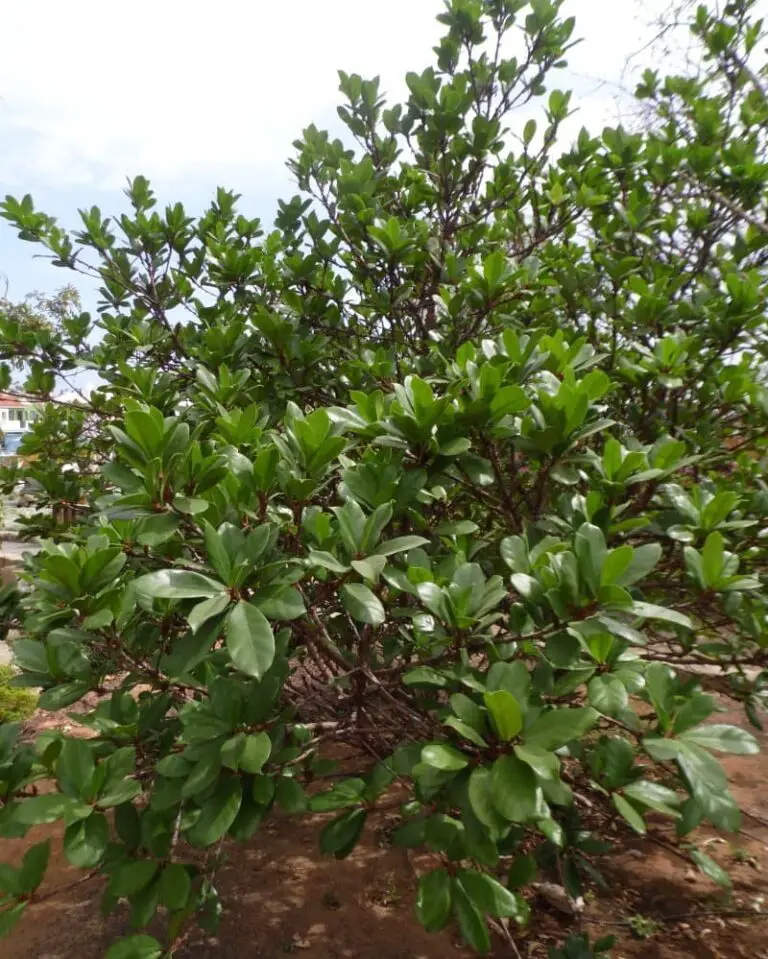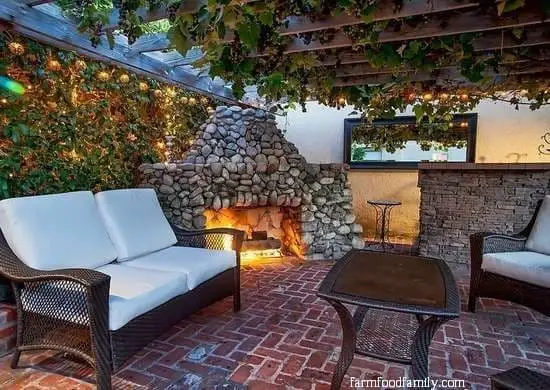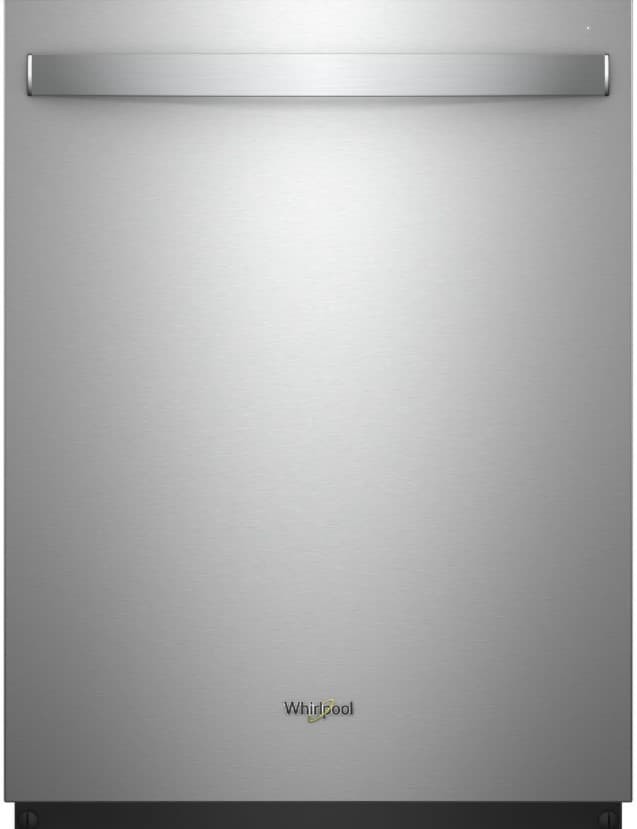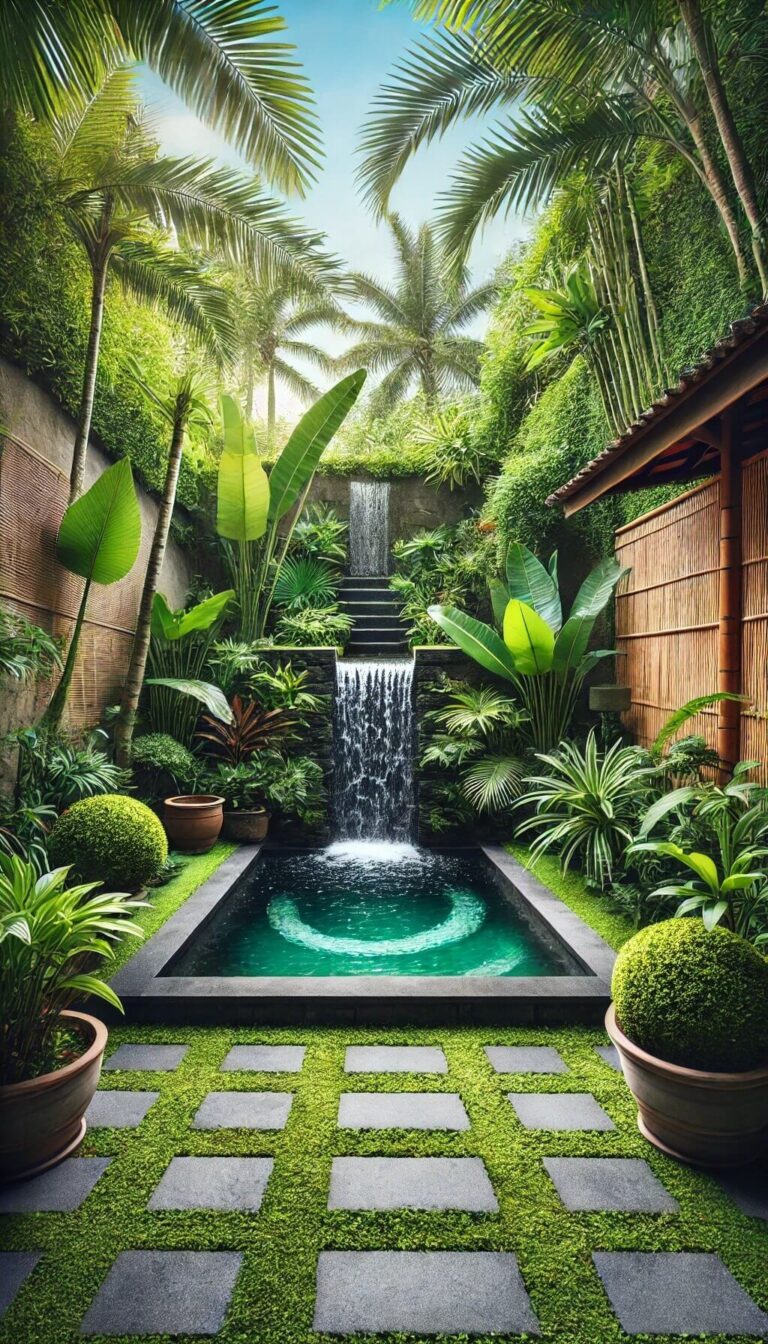17 Types Of Landscaping Rocks: What Works Best For Your Garden
Rock gardens are a stunning feature in any yard, serving both aesthetic and functional purposes. By incorporating a rock garden, homeowners can not only add visual interest but also aid in drainage and erosion control. Selecting the ideal type of landscaping rock can be overwhelming due to the numerous options available. This article delves into various types of rocks, exploring their benefits and characteristics.
Additionally, we will provide valuable tips on how to choose the most suitable rocks for your garden, ensuring a harmonious blend of form and function.
Types of Landscaping Rocks
Artificial Rocks.
Artificial rocks, a man-made creation, offer unparalleled versatility, coming in an array of shapes, sizes, colors, and textures. These synthetic wonders are crafted from materials such as concrete, resin, fiberglass, and latex, allowing for endless customization options. The applications for artificial rocks are multifaceted, extending beyond mere decoration to include functional elements like waterfalls, ponds, and gardens. Despite their many benefits, artificial rocks also have some drawbacks.
While they can be significantly more affordable than their natural counterparts, their synthetic nature may render them less durable over time. Furthermore, some individuals may find their appearance lacking in authenticity. However, the advantages of artificial rocks – including their lightweight construction, making them easily movable within your yard – undoubtedly outweigh these potential limitations.
Beach Pebbles.
Beach pebbles, also known as small rocks, are a popular choice for landscaping due to their unique look and versatility. These smooth, round stones come in a variety of colors including black, white, and yellow, making them easy to find one that fits your project’s aesthetic.
While they may require more effort to install and maintain compared to other types of rocks, beach pebbles are relatively inexpensive and can be sourced for free if you live near a beach or purchased at most home improvement stores or online. When working with beach pebbles, it’s essential to wash them before use to remove any sand or salt that may be present. Additionally, wearing gloves is recommended to protect your hands from the sharp edges of the rocks.
With proper planning and maintenance, beach pebbles can add a unique touch to your yard or garden. Some benefits of using beach pebbles in landscaping include their attractiveness, ease of use, and relatively low cost. However, it’s crucial to consider the potential drawbacks, such as difficulty installing them, requiring more maintenance, and potentially being expensive.
If you’re considering using beach pebbles for your landscape project, be sure to have a plan in place, clean them regularly, and budget accordingly.
Black Polished Pebbles.
Black polished pebbles offer a sophisticated way to introduce contrast and texture to your outdoor space. Their sleek appearance makes them an excellent addition to gardens, poolside landscaping, or as an accent in flower beds. The dark color also allows for subtle concealment of areas you’d rather not draw attention to. While they possess several advantages, it’s essential to consider the pros and cons before incorporating them into your landscape design.
Black polished pebbles bring a distinctive elegance to your yard or garden, making them a suitable choice for those seeking a unique look. They also prove to be relatively low-maintenance, requiring minimal water upkeep – an added benefit in regions prone to drought. Nevertheless, these pebbles can come at a higher cost, and their durability may be compromised by excessive foot traffic.
Boulders.

Boulders, the largest type of landscaping rock, can weigh anywhere from a few hundred pounds to several tons. Their substantial size and weight make them ideal for accentuating garden beds, building walls, creating water features, or standing alone as striking focal points. One of the primary draws of boulders is their durability, which ensures they’ll remain a defining feature in your landscape design for many years to come.
Additionally, their large scale allows for a wide range of visual effects, from formal and structured to natural and organic. However, it’s essential to consider both the benefits and drawbacks before incorporating boulders into your landscaping plan. On the plus side, boulders offer excellent resistance to wear and tear, making them a worthwhile investment for those seeking low-maintenance landscaping solutions.
Furthermore, they can be used to create a diverse array of looks, catering to various personal tastes and design preferences. On the other hand, boulders can be a significant financial burden due to their size and weight. Installation may also prove challenging, requiring specialized equipment or professional assistance. Finally, it’s crucial to ensure that boulders are installed safely to avoid potential hazards, such as falling rocks.
Brick chips.
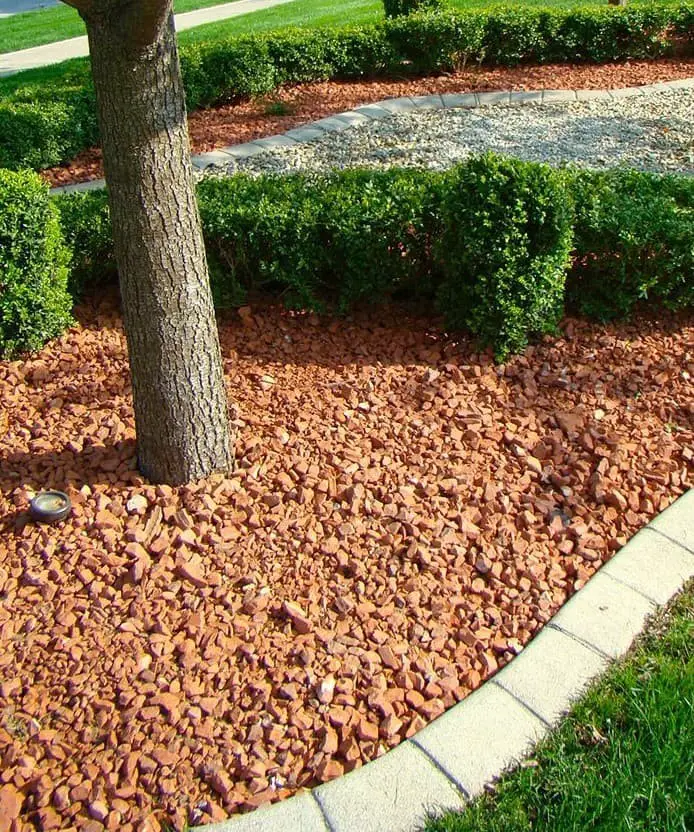
Brick chips, small red bricks that have been crushed into smaller pieces, are a versatile hardscaping material often used as a mulch around trees and shrubs, as well as in gardens and walkways. Their finished appearance makes them an attractive option for landscaping projects, while their durability ensures they remain easy to maintain and long-lasting. Additionally, brick chips resist fading and washing away, making them a low-maintenance choice.
In terms of pros and cons, brick chips bring several benefits to the table. They are relatively affordable and simple to install, offering good drainage and erosion control in the process. However, it’s worth noting that removing brick chips can be a challenge if you decide to change your landscaping design at some point in the future.
Cobblestones.
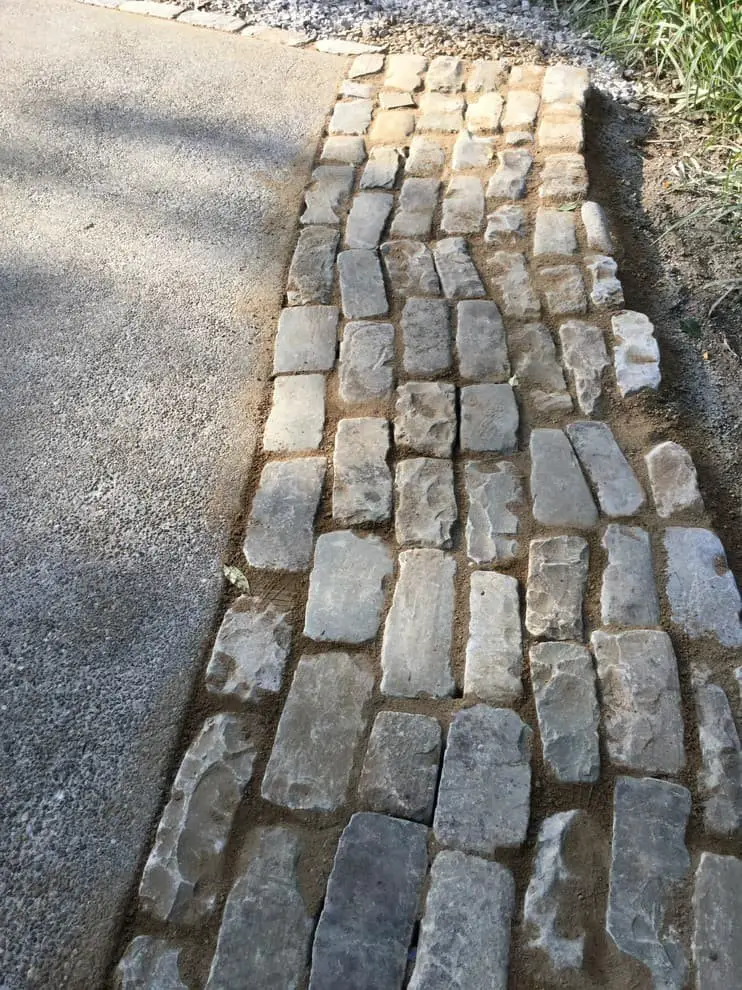
Cobblestones, with their rounded, water-worn texture, are a popular choice for driveways, walkways, and patios. Available in a range of colors including gray, tan, pink, and red, these natural stones bring a touch of elegance to any landscaping project. Their durability is one of their biggest advantages – cobblestones can withstand the test of time, requiring only an occasional rinse with a hose or pressure washer to keep them looking their best.
While cobblestones are certainly a practical choice for high-traffic areas, they also have some drawbacks. For instance, they can be quite expensive, which may make them less accessible for some projects. That being said, the classic look and long-lasting durability of cobblestones make them an attractive option for those seeking a timeless landscaping solution.
Crushed Granite Gravel.
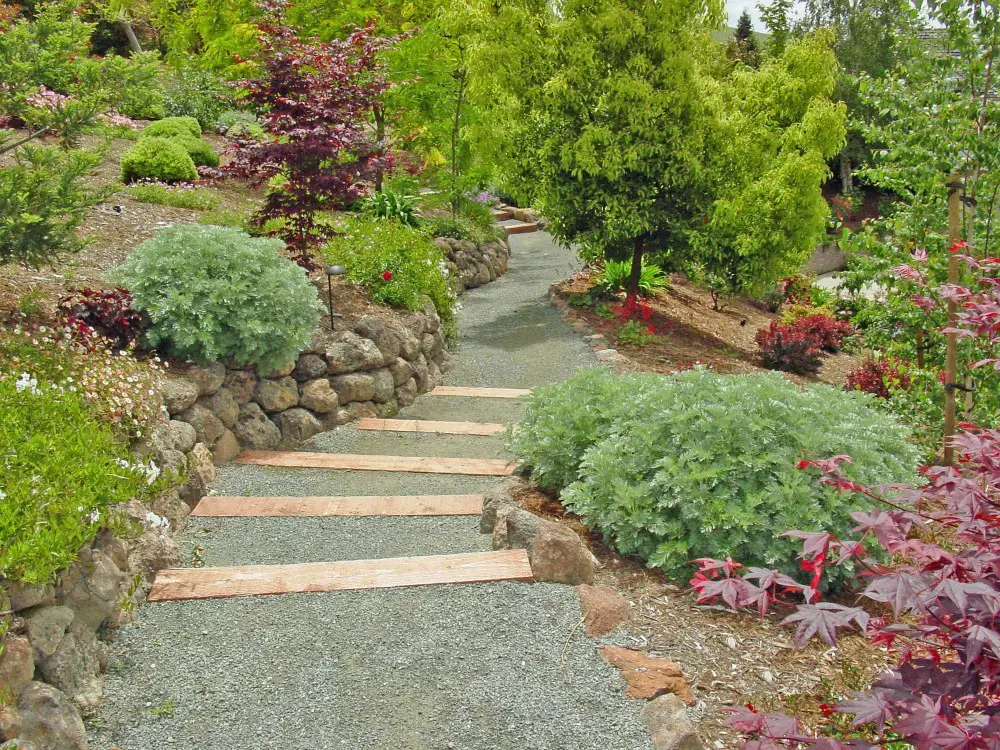
Crushed Granite Gravel is a top choice among landscaping rocks due to its versatility and low maintenance requirements. This popular option comes in a range of colors, making it simple to select the perfect hue to complement your home’s exterior design. Furthermore, Crushed Granite Gravel offers an affordable solution for homeowners looking to add some visual appeal to their yard.
While it is relatively easy to install, property owners should be aware that this type of rock can be quite heavy and challenging to remove if desired. Additionally, Crushed Granite Gravel may not retain its color well over time, which could impact the overall aesthetic appeal of your landscaping. Nevertheless, it remains a practical option for covering large areas, such as dog runs or tree rings. Moreover, it is widely available at most landscape supply stores.
Crushed Stones.
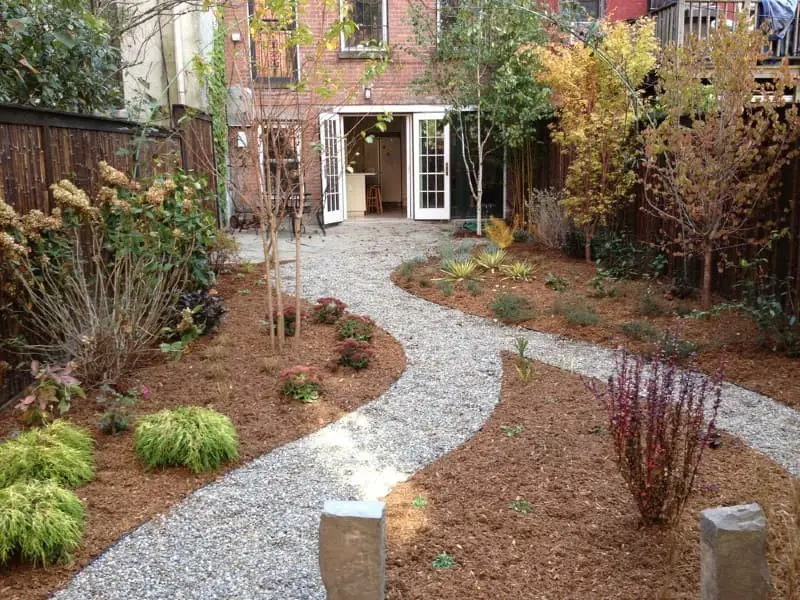
Crushed stones are a versatile landscaping option that offers a range of benefits. With their diverse color palette and size options, they can be used for both decorative and functional purposes. The ease of installation makes them an attractive choice for DIY enthusiasts, too. The two main categories of crushed stones are decorative and functional varieties. Decorative types are ideal for landscaping projects, while functional ones serve as a drainage solution or base material for pavers.
When selecting functional crushed stones, it’s crucial to choose the right size for your specific project. Crushed stones excel in certain areas: they drain well, reducing erosion risks, and require little maintenance since they don’t need sealing or treatment. Additionally, their availability in various colors makes them a stylish option for landscaping. However, crushed stones also have some drawbacks. Their installation can be challenging, and they may be more expensive than other options.
Furthermore, they eventually break down and need to be replenished every few years.
Decomposed Granite.
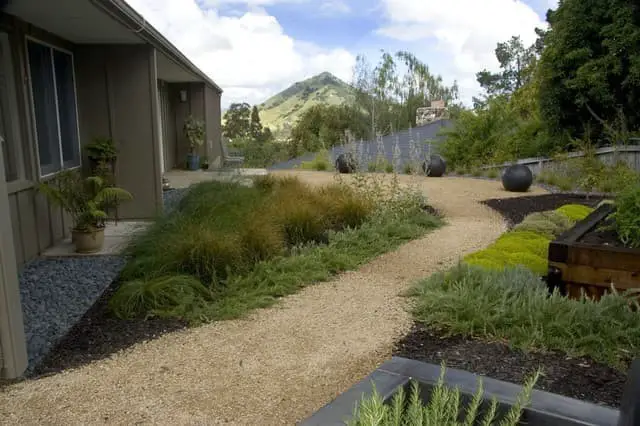
Fieldstone.
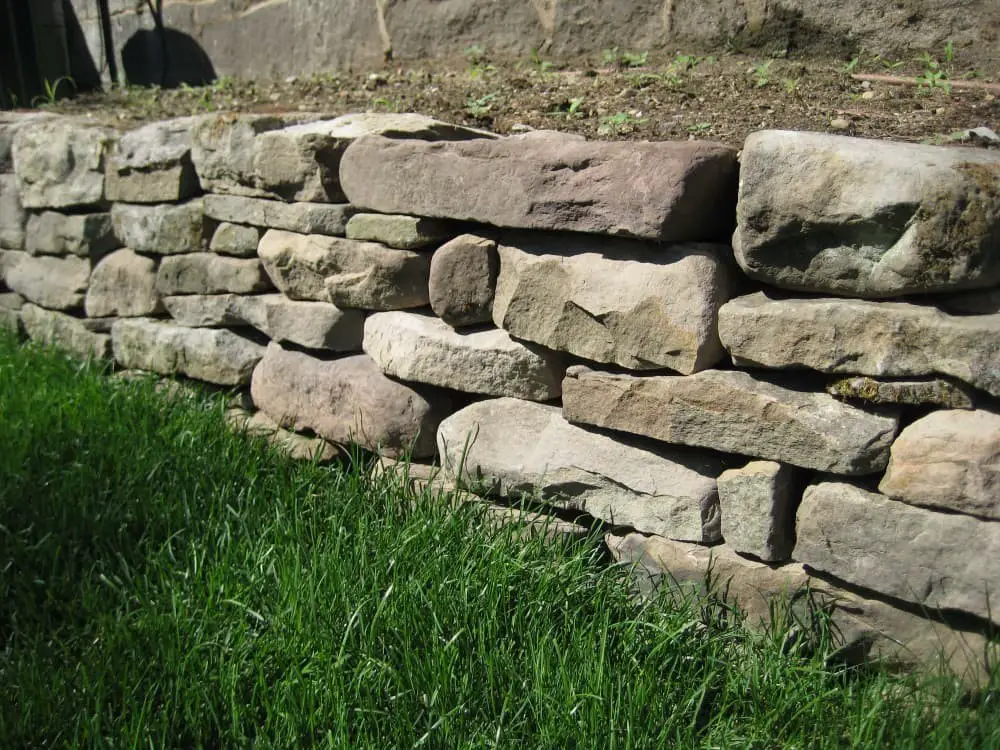
Fieldstone, a sedimentary rock comprising fragments of other rocks, boasts a kaleidoscope of colors including grey, red, brown, and tan. Its versatility has made it a popular choice in landscaping projects, allowing designers to create a range of unique looks. One notable application is the construction of dry stack walls, where stones are stacked randomly without mortar. This technique enables the creation of rustic or formal designs, adding an element of natural charm to outdoor spaces.
While fieldstone offers many benefits, it also presents some drawbacks. On the positive side, its natural appearance can be a major advantage in landscaping projects aiming to create a naturalistic atmosphere. Fieldstone’s affordability is another significant plus, making it a more accessible option for homeowners and landscapers alike. However, finding stones of uniform size and shape can be a challenge, which may hinder the creation of a cohesive design.
Furthermore, fieldstone is one of the pricier types of rocks available, which may be a consideration for those on a budget.
Flagstone.
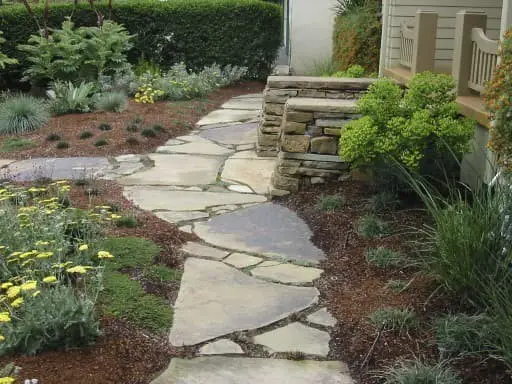
Flagstone, a sedimentary rock, is renowned for its layered structure, which makes it an excellent choice for landscaping purposes. Its natural appearance and diverse color palette – ranging from gray to tan, brown, red, and blue – have made it a popular selection for walkways, patios, and other outdoor areas. The pros of using flagstone include its durability, ease of installation due to its cleft surface, and slip-resistance, eliminating the need for additional sealing.
On the flip side, one of the cons is that flagstone can be on the pricier side compared to other landscaping options. Furthermore, it may stain easily and prove challenging to clean, factors that homeowners should consider when deciding whether this rock type suits their needs.
Gabion Rocks.

Gabion rocks have multiple applications in landscaping. They’re used to construct retaining walls, garden beds, and even line walkways. Their versatility also extends to water features like ponds and waterfall displays. The rocks come in a range of sizes and colors, allowing homeowners to find the perfect match for their project. One of the key advantages of gabion rocks is their affordability and ease of installation.
They’re a popular choice among landscapers due to their durability and stability. However, one drawback is that they can be challenging to remove if necessary repairs are required in the future. Nevertheless, gabion rocks remain a viable option for homeowners seeking an affordable and straightforward way to enhance their outdoor spaces.
Lava Rocks.
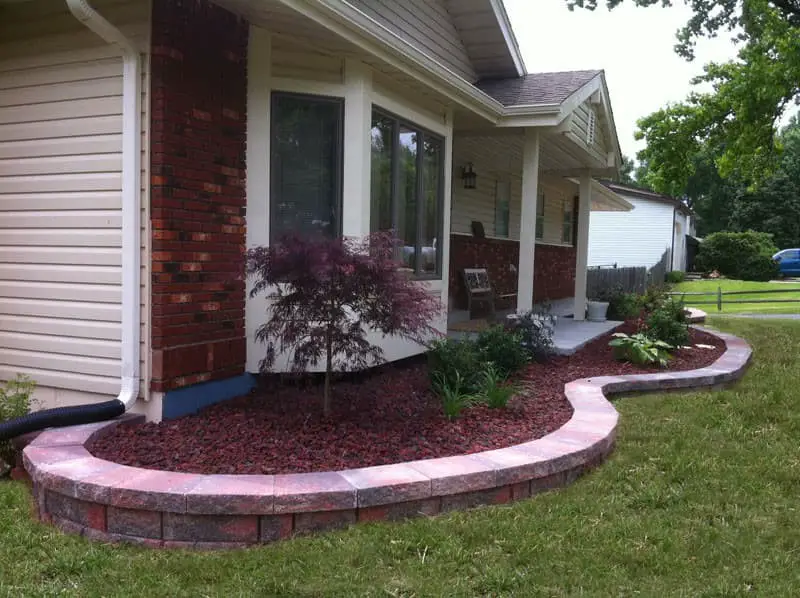
Igneous in nature, lava rocks are formed when molten lava cools and solidifies. Their striking colors, typically ranging from fiery red to deep black or earthy brown, make them a standout feature in any landscape. One of the perks of working with lava rocks is their lightweight and porous composition, which makes them effortless to manipulate and shape.
With these characteristics, it’s no wonder that lava rocks are a popular choice for various landscaping projects, such as mulching, creating walking paths, driveways, or even flowerbeds. What sets lava rocks apart from other decorative elements is their distinctive appearance, which adds visual interest and a touch of uniqueness to any outdoor space. Moreover, they require minimal upkeep and care, making them an excellent option for those seeking a low-maintenance landscape solution.
Marble Rocks.
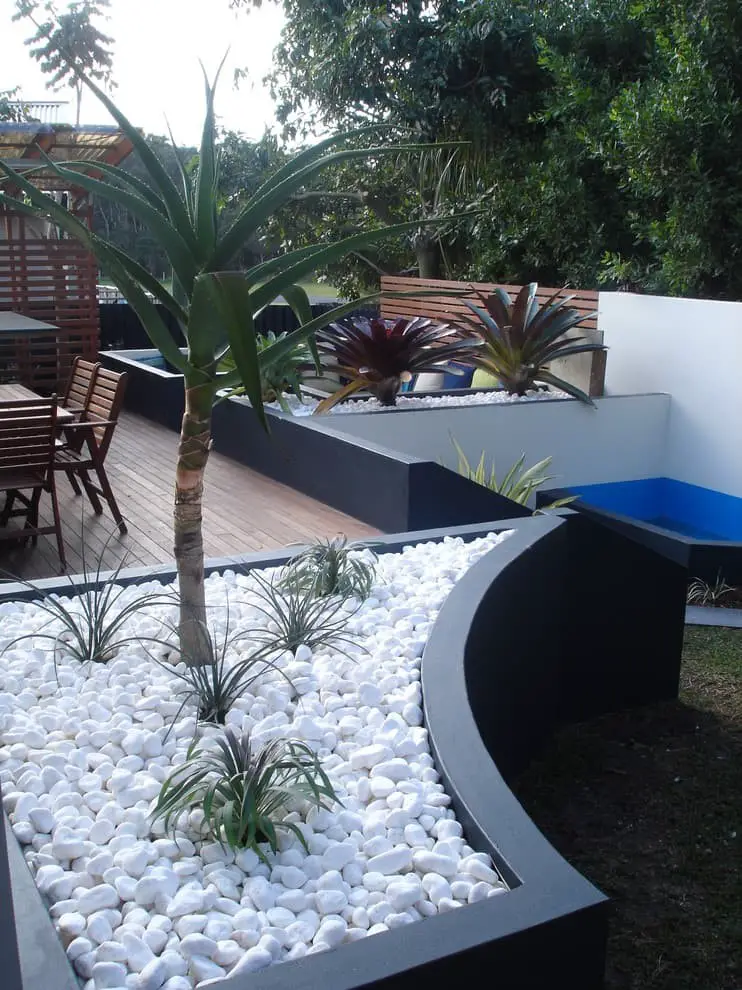
Marble rocks have gained popularity in landscaping due to their striking glossy surfaces. The smooth texture of marble makes it a versatile choice for both indoor and outdoor settings. This metamorphic rock is available in a range of colors, including white, black, pink, and green. The formation of marble begins with limestone, which undergoes high temperatures and pressures to transform into this unique rock.
Composed primarily of calcium carbonate, the same mineral found in limestone, marble’s metamorphic process yields its characteristic grainy appearance. Despite being more expensive than other landscaping rocks, marble’s exceptional durability and resistance to weathering make it an attractive option for outdoor applications. Its hardness ensures that it withstands wear and tear, making it a reliable choice for landscapers seeking a high-quality material.
Pea Gravel.
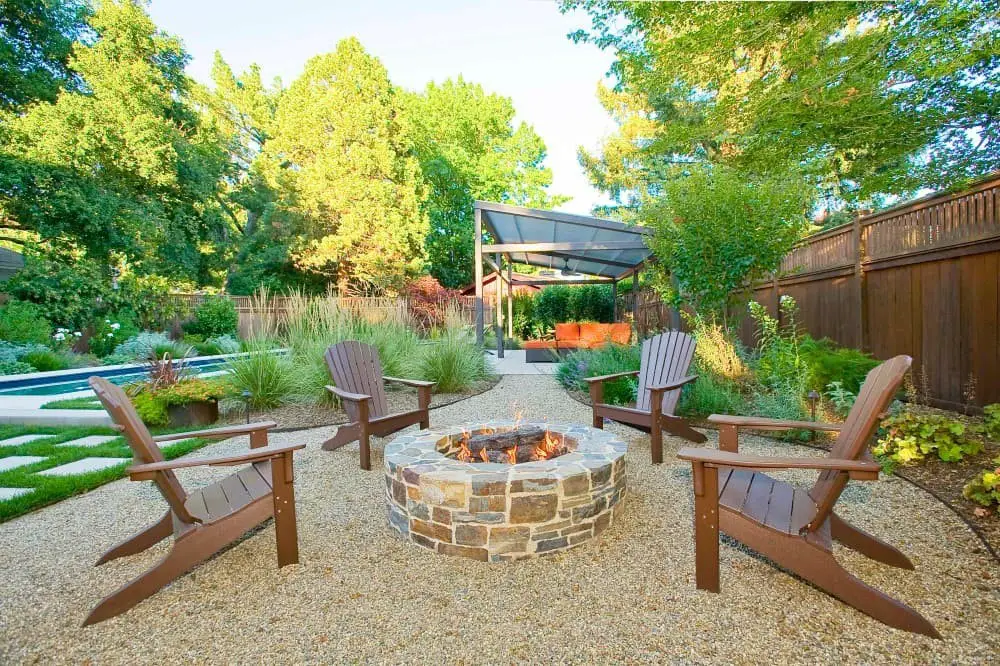
Pea Gravel has earned its reputation as a top-notch landscaping material, boasting a wide range of colors and sizes that cater to diverse project requirements. Its ease of installation and maintenance make it an attractive choice for both homeowners and businesses seeking a hassle-free solution. The versatility of Pea Gravel is further enhanced by its affordability, making it an ideal option for those on a budget.
With widespread availability at home improvement stores and landscaping supply retailers, it’s no wonder why this material remains a go-to favorite among landscape enthusiasts.
Retaining Wall Rocks.
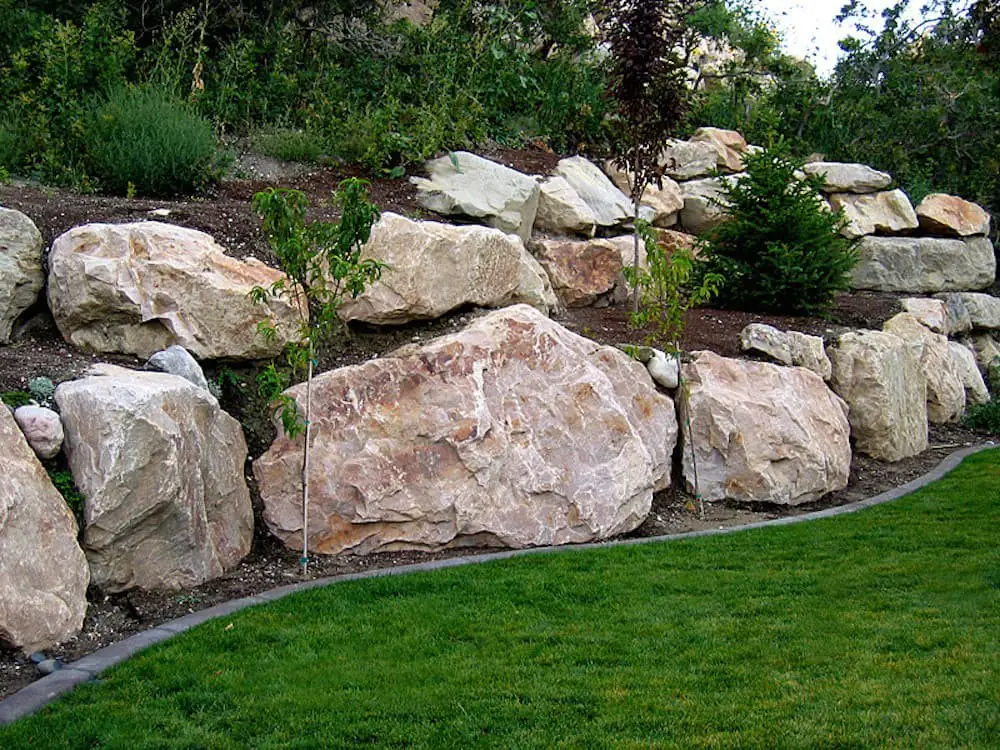
While retaining wall rocks are a popular choice for building walls in landscaping projects, it’s essential to consider their unique characteristics and potential drawbacks. These larger-than-usual rocks are often ideal for constructing sturdy barriers due to their substantial weight. The variety of colors and textures available means you can easily find a suitable match for your home’s aesthetic.
One advantage of retaining wall rocks is that they can provide structure and stability to your landscape, making them an excellent option for creating defined boundaries or raised beds for plants. Additionally, these rocks can be used to create diverse looks in your outdoor space, allowing for creative freedom in your design. However, it’s crucial to acknowledge the potential drawbacks of using retaining wall rocks. If not installed correctly, they can collapse and cause damage to your property.
Furthermore, these rocks can be costly, depending on the type you choose, and their size and weight may make them challenging to install, especially if you’re doing it yourself.
River Rocks.
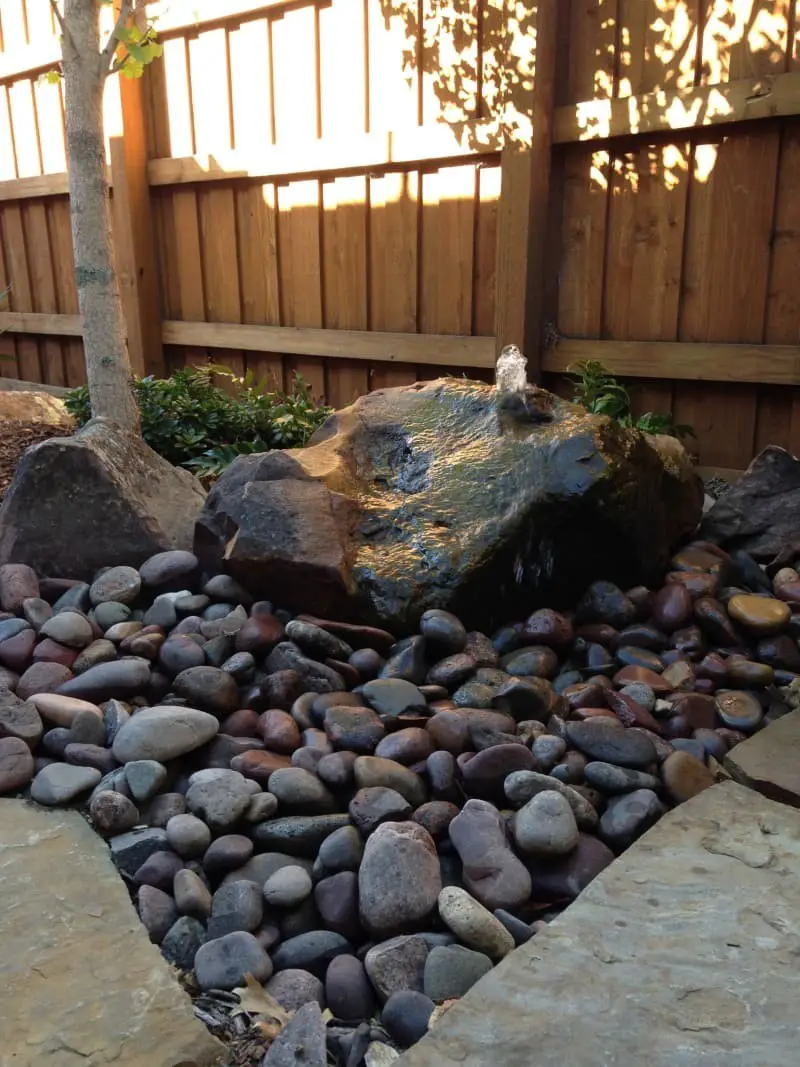
River rocks, often utilized in landscaping for their versatility and aesthetic appeal, are smooth, rounded natural formations that come in a diverse range of colors and sizes. Their applications are numerous, allowing them to be employed in the creation of meandering paths, borders, or accent pieces in gardens. Moreover, they can be used as building materials for water features such as fountains or ponds.
The appeal of river rocks lies in their relatively affordable price point and ease of manipulation, making them a popular choice among landscapers and DIY enthusiasts alike. They are widely available at home improvement stores and landscape supply outlets. When selecting river rocks for your landscaping project, it is crucial to opt for rocks that share similar dimensions and shapes, thereby ensuring a uniform visual outcome.
How to choose landscaping rock.
When it comes to landscaping rock, there’s more to consider than just picking out a pretty color or texture. The right choice depends on several key factors, starting with the size of the rocks themselves. This is crucial because different areas of your yard require varying sizes of rocks. For instance, smaller rocks might be perfect for borders, while larger ones would suit a garden or pathway better. Next up, think about the color palette you’re working with in your landscaping.
The hue of the rock can either complement or clash with other elements, so it’s essential to choose a color that harmonizes with the overall aesthetic. This will help create a cohesive look that ties everything together. Another crucial consideration is the type of rock itself. With so many options available, from natural-looking stone and gravel to more polished choices like marble or granite, you want to select one that aligns with your desired outcome.
If you’re aiming for a rustic, earthy vibe, stone or gravel might be the way to go, while a more refined look could call for something like marble. Finally, don’t forget to factor in the cost of the rocks. Prices will vary depending on factors like rock type, size, and color, so it’s smart to do some research and compare prices before making your final decision.
What size rock is best for landscaping?
When it comes to selecting rocks for landscaping, several factors come into play. The type of landscape design you’re aiming for, as well as the specific feature or area being created, will influence your choice. For instance, a rock garden might require smaller rocks, whereas a water feature or naturalistic setting may benefit from larger ones. To achieve a visually appealing and intriguing design, it’s often beneficial to incorporate a mix of rock sizes and shapes into your landscaping plan.
This encourages experimentation and allows you to find the perfect combination that suits your project’s unique needs.
What is the cheapest rock to use for landscaping?
When it comes to landscaping with rocks, affordability can vary greatly depending on the type. While premium options like granite and marble are certainly stunning, they can also be quite pricey. On the other hand, more budget-friendly options like limestone and sandstone are readily available without breaking the bank.
The question is, what’s the most affordable rock to incorporate into your landscaping design? The answer largely depends on your priorities.
If you’re seeking a rock that’s extremely durable and will withstand the test of time, you may be willing to invest in something like granite or marble. However, if you simply want to add some visual appeal without compromising your budget, limestone or sandstone could be the way to go.
What type of rock is best for landscaping?
When it comes to landscaping, choosing the right type of rock can be overwhelming due to the numerous options available. However, not all rocks are created equal, and some are better suited for certain applications than others. To help you make an informed decision, here’s a quick guide to the most popular types of rocks used in landscaping.
Granite is one of the most sought-after types of rocks for landscaping.
Its durability makes it an ideal choice for projects like walkways, patios, and fire pits. With its wide range of colors available, you’re sure to find a shade that complements your outdoor space.
Flagstone is another popular option for landscaping. Its versatility stems from the various shapes and sizes it comes in, making it suitable for different projects. It’s often used for pathways, patios, and pool decks, where its natural beauty can be showcased.
For a more rustic look, river rock is an excellent choice. Its natural colors and varied sizes allow you to create distinct designs. You can use it as mulch or in water features, depending on your desired aesthetic.
How do you maintain landscaping rocks?
To keep your landscaping rocks looking their best, consider a three-pronged approach. First, prioritize cleanliness by hosing them down or using a brush to scrub away any dirt and debris. Next, consider sealing your rocks to shield them from the elements and preserve their original color. Finally, don’t forget to regularly inspect and replace worn-out rocks to maintain a consistent and visually appealing landscape.
Conclusion
In wrapping up our exploration of landscaping rocks, it’s essential to remember that informed decision-making is key to achieving the desired outcome for your garden. By considering the various types of landscaping rocks we’ve discussed, you’re well on your way to selecting the perfect ones for your outdoor space. As a final thought, don’t hesitate to seek expert advice if you have any remaining questions or concerns.
Related Posts
To embark on a successful farm business, selecting the right equipment is crucial. Similarly, safeguarding your home requires thoughtful consideration when installing a fence. Moreover, understanding tipping etiquette for driveway sealers can ensure a seamless experience. On another note, career paths like landscape architecture and design require dedication and skill, while capturing the beauty of flora through photography demands artistic expertise.


